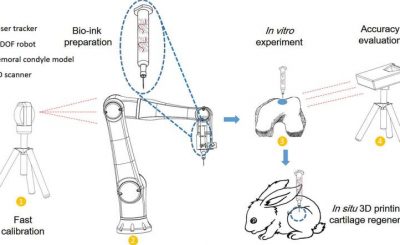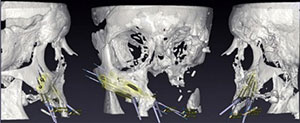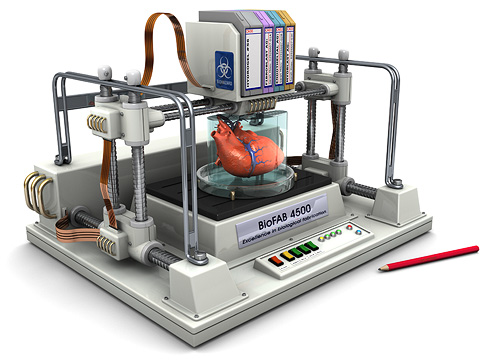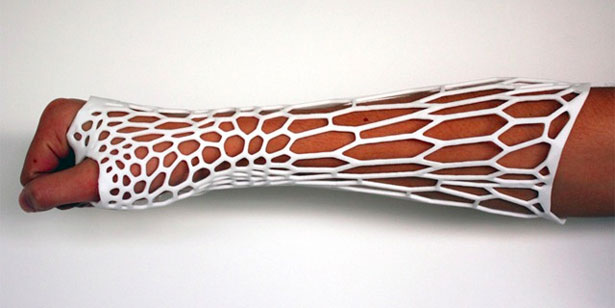 “As you know, LulzBot machines can handle a wide variety of materials, so we helped OpenBCI prototype their headsets out of different materials, like nylon, NinjaFlex, etc.,” says Harris Kenny, Vice President of Marketing at Aleph Objects, the company behind the LulzBot line. “So, we’ve already worked with them a lot. And it’s going to be great taking this partnership even further.”
“As you know, LulzBot machines can handle a wide variety of materials, so we helped OpenBCI prototype their headsets out of different materials, like nylon, NinjaFlex, etc.,” says Harris Kenny, Vice President of Marketing at Aleph Objects, the company behind the LulzBot line. “So, we’ve already worked with them a lot. And it’s going to be great taking this partnership even further.”
The first step to taking their collaboration to the next level is the addition of new rewards to the OpenBCI Kickstarter campaign. If you 
The Megapack is meant to include everything necessary to build Ultracortex headsets in batches of five or ten, in an educational, research, or hackerspace setting. So, this includes the Ganglion board, the dry electrodes, and all of the wiring (everything in the “Print It Yourself” Ultracortex Kits), as well as a TAZ 5 3D printer to actually 3D print the headsets themselves. In addition to being available as rewards on the campaign page, OpenBCI is also selling the TAZ 5 and the 
The Mark IV printed in NinjaFlex.
Prototyping the Mark IV Ultracortex and the sale of LulzBot products is only the beginning of the partnership for the two companies, however. Aleph Objects and OpenBCI are still working out all of the details, but they plan to progress the relationship as OpenBCI works to fulfill its campaign rewards. “Harris Kenny at Aleph Objects has been really great about helping us in developing the Mark IV. They’ve been really hands on, printing out headsets in different materials and shipping us prototypes in various materials that we don’t have access to in our shop. It’s in both of our long-term plans to continue improving the Ultracortex, the full OpenBCI system, using their infrastructure,” Russomanno says.
Future plans include OpenBCI joining LulzBot at CES in January, where they’ll be able to showcase their Ultracortex headsets to attendees, while the TAZ 5 produces additional devices on the floor. On top of that, Russomanno says that he also hopes to take up a brief residency at LulzBot HQ in Loveland, Colorado, where, if the plan comes to fruition, “We’ll be hands-on with the LulzBot team doing the R&D for the Mark IV headset in Colorado.” And, though the possibility is still far from concrete, there is a chance that LulzBot could help with the production of Ultracortex headsets in the future. Both Russomanno and Kenny, however, emphasized that this was an idea that was only being tossed around.

Kenny does explain that they are examining future opportunities, “Beyond our existing work together, we are discussing future partnerships in product development and production. This could include robotics and other technology that would integrate with the OpenBCI platform. We have discussed potentially collaborating through on-site design sprints, using the LulzBot 3D printer cluster for manufacturing, using Aleph Objects’ 

With both open hardware companies supporting one another, it’s possible to imagine the huge amount of innovation that can be accomplished by both parties. And, because all of it is made available to the public, the knowledge and capabilities brought about by both partners can be quickly spread through the open source community. In the same way that RepRap 3D printers are hugely responsible for the 3D printing renaissance currently taking place, it’s not difficult to envision biohacking experience a similar revolution through companies like OpenBCI.

Soon, the ability to control hardware and software via the electrical impulses in one’s body could be as popular as desktop 3D printing is now. Heck, maybe even your next 3D printer will have a wireless mind control interface, instead of an on-board LCD screen. And, instead of SD cards and thumb drives being used to upload files for 3D printing, we’ll use our imaginations to upload files telepathically! I’m clearly getting ahead of myself, but I can’t think of a much better reason to buy a 3D printer a bunch of mind control headsets right now.
information
 “As you know, LulzBot machines can handle a wide variety of materials, so we helped OpenBCI prototype their headsets out of different materials, like nylon, NinjaFlex, etc.,” says Harris Kenny, Vice President of Marketing at Aleph Objects, the company behind the LulzBot line. “So, we’ve already worked with them a lot. And it’s going to be great taking this partnership even further.”
“As you know, LulzBot machines can handle a wide variety of materials, so we helped OpenBCI prototype their headsets out of different materials, like nylon, NinjaFlex, etc.,” says Harris Kenny, Vice President of Marketing at Aleph Objects, the company behind the LulzBot line. “So, we’ve already worked with them a lot. And it’s going to be great taking this partnership even further.”











